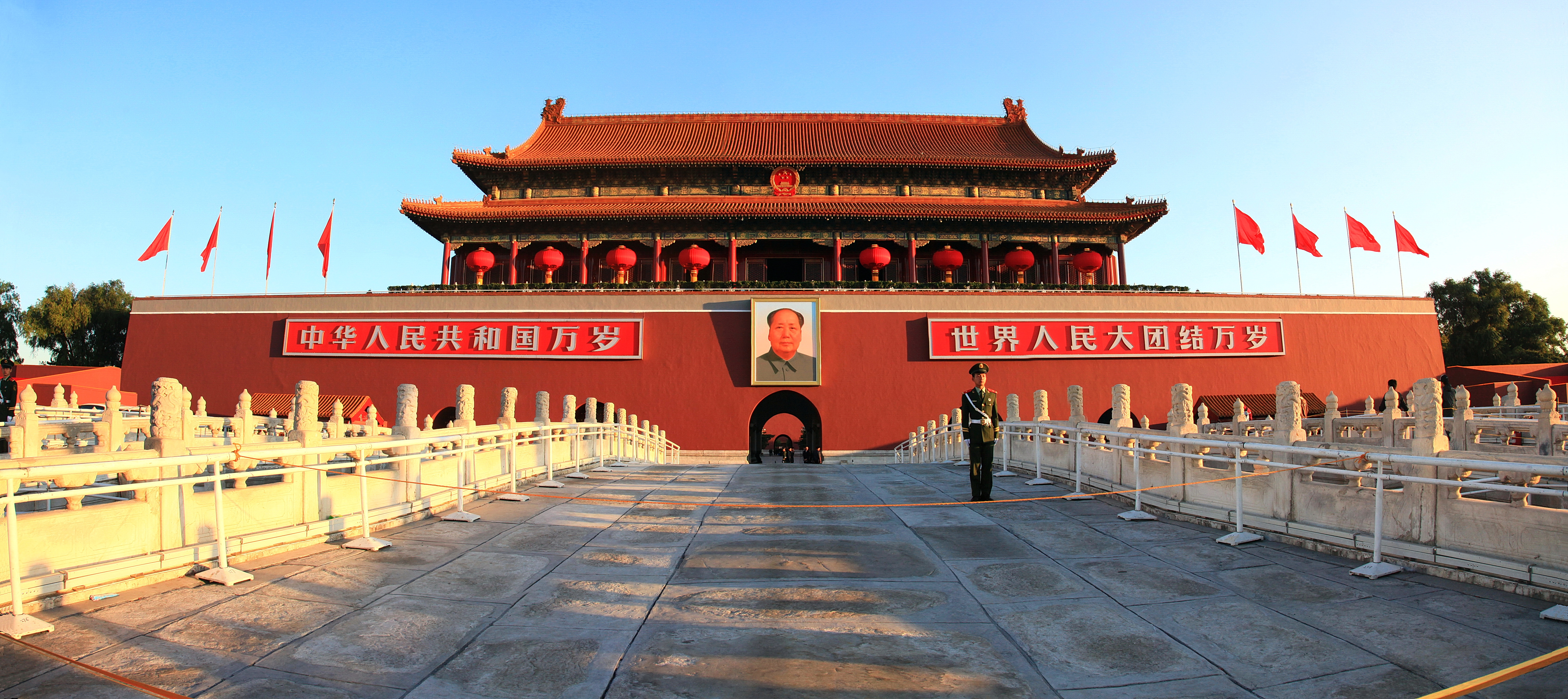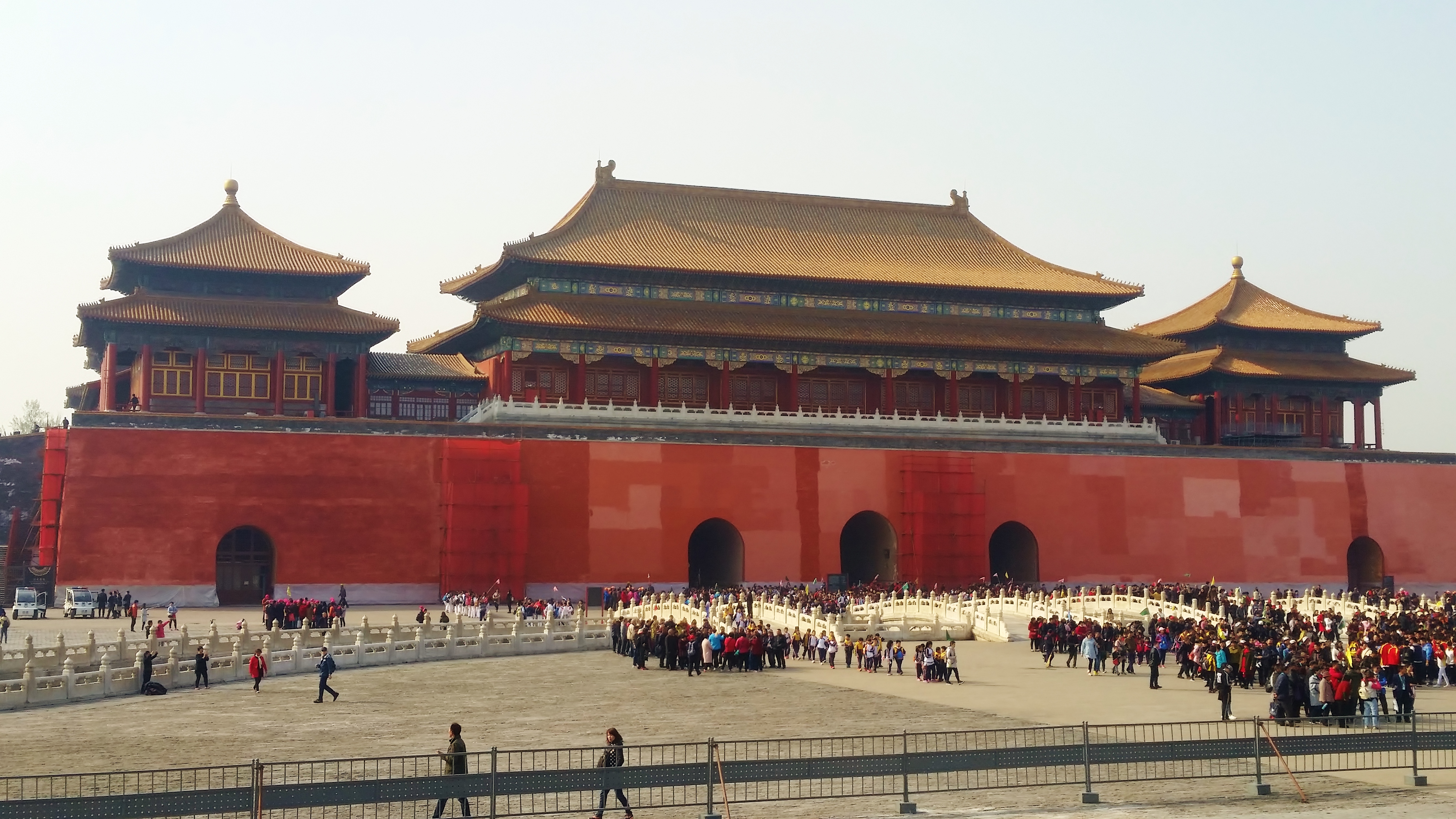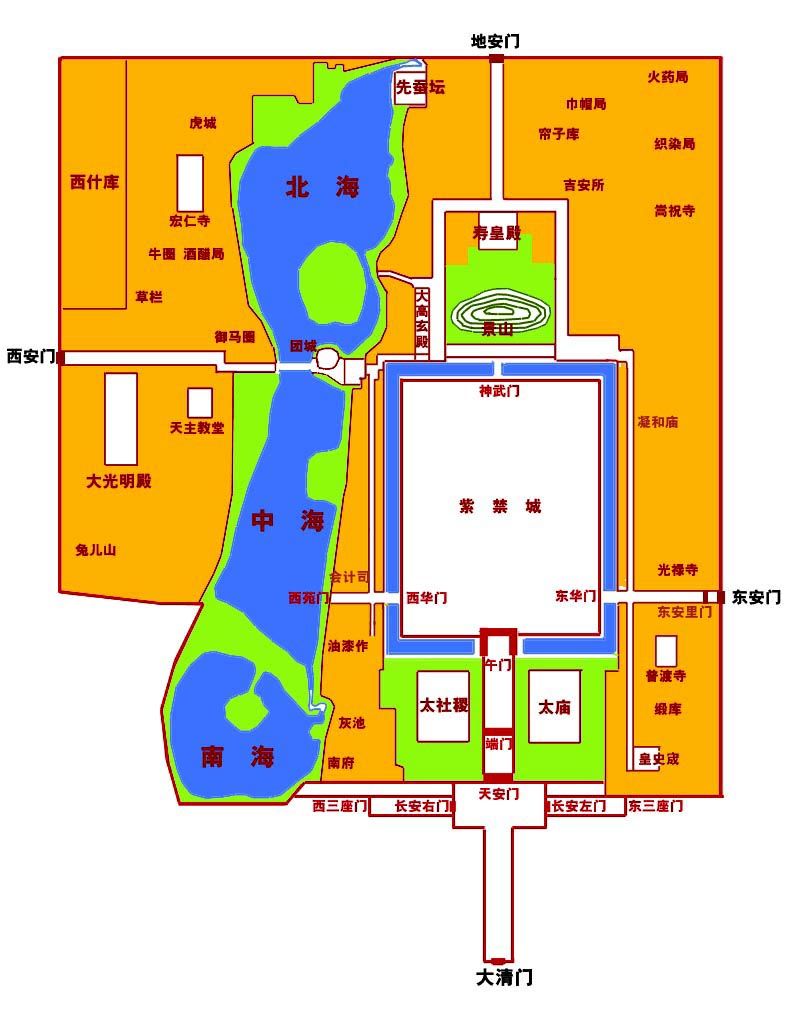|
Duanmen
Duanmen, also known as the Gate of Uprightness, or Upright Gate, is a gate in Beijing's Imperial City, and is located south of the Forbidden City The Forbidden City () is a palace complex in Dongcheng District, Beijing, China, at the center of the Imperial City of Beijing. It is surrounded by numerous opulent imperial gardens and temples including the Zhongshan Park, the sacrifi .... Proceeding north from the entrance to the Imperial City, it is the next gate after the Tian'anmen, or Gate of Heavenly Peace, and has a similar structure to that gate. The next gate further north is the Meridian Gate, which is the southern and main gate to the Forbidden City itself. References External links * Forbidden City Gates of Beijing {{China-stub ... [...More Info...] [...Related Items...] OR: [Wikipedia] [Google] [Baidu] |
Forbidden City
The Forbidden City () is a Chinese palace, palace complex in Dongcheng District, Beijing, China, at the center of the Imperial City, Beijing, Imperial City of Beijing. It is surrounded by numerous opulent imperial gardens and temples including the Zhongshan Park (Beijing), Zhongshan Park, the sacrificial Imperial Ancestral Temple, the Beihai Park, and the Jingshan Park. It is officially administered by the Palace Museum. The Forbidden City was constructed from 1406 to 1420, and was the former Chinese imperial palace and winter residence of the Emperor of China from the Ming dynasty (since the Yongle Emperor) to the end of the Qing dynasty, between 1420 and 1924. The Forbidden City served as the home of Chinese emperors and their households and was the ceremonial and political center of the Government of China, Chinese government for over 500 years. Since 1925, the Forbidden City has been under the charge of the Palace Museum, whose extensive collection of artwork and arti ... [...More Info...] [...Related Items...] OR: [Wikipedia] [Google] [Baidu] |
Tian'anmen
The Tiananmen (also Tian'anmen (天安门), Tienanmen, T’ien-an Men; ), or the Gate of Heaven-Sent Pacification, is a monumental gate in the city center of Beijing, China, the front gate of the Imperial City of Beijing, located near the city's Central Business District, and widely used as a national symbol. First built during the Ming dynasty in 1420, Tiananmen was the entrance to the Imperial City, within which the Forbidden City was located. Tiananmen is located to the north of Tiananmen Square, and is separated from the plaza by Chang'an Avenue. Name The Chinese name of the gate (/), is made up of the Chinese characters for "heaven", "peace" and "gate" respectively, which is why the name is conventionally translated as "Gate of Heavenly Peace". However, this translation is somewhat misleading, since the Chinese name is derived from the much longer phrase "receiving the mandate from heaven, and pacifying the dynasty". (). The Manchu translation, ''Abkai elhe obure duk ... [...More Info...] [...Related Items...] OR: [Wikipedia] [Google] [Baidu] |
Meridian Gate
The Meridian Gate or Wumen (; Manchu: ; Möllendorff: ''julergi dulimbai duka'') is the southern and largest gate of the Forbidden City in Beijing, China. Unlike the other gates of the Forbidden City, the Meridian Gate has two protruding arms on either side, derived from ancient que towers traditionally used to decorate the main entrances of palaces, temples and tombs. The gate has five arches. The three central arches are close together in the main, central section; the two flanking arches are farther apart from the three central arches, and are located between the central section and the protruding arms. The centre arch was formerly reserved for the Emperor alone; the exceptions were the Empress, who could enter it once on the day of her wedding, and the top three scholars of the triennial civil service examinations, who left the exams through the central arch. All other officials and servants had to use the four side arches. A series of buildings form the superstructure of ... [...More Info...] [...Related Items...] OR: [Wikipedia] [Google] [Baidu] |
Beijing
} Beijing ( ; ; ), alternatively romanized as Peking ( ), is the capital of the People's Republic of China. It is the center of power and development of the country. Beijing is the world's most populous national capital city, with over 21 million residents. It has an administrative area of , the third in the country after Guangzhou and Shanghai. It is located in Northern China, and is governed as a municipality under the direct administration of the State Council with 16 urban, suburban, and rural districts.Figures based on 2006 statistics published in 2007 National Statistical Yearbook of China and available online at archive. Retrieved 21 April 2009. Beijing is mostly surrounded by Hebei Province with the exception of neighboring Tianjin to the southeast; together, the three divisions form the Jingjinji megalopolis and the national capital region of China. Beijing is a global city and one of the world's leading centres for culture, diplomacy, politics, finance, busi ... [...More Info...] [...Related Items...] OR: [Wikipedia] [Google] [Baidu] |
Imperial City, Beijing
The Imperial City () is a section of the city of Beijing in the Ming dynasty, Ming and Qing dynasty, Qing dynasties, with the Forbidden City at its center. It refers to the collection of gardens, shrines, and other service areas between the Forbidden City and the Inner City of ancient Beijing. The Imperial City was surrounded by a Chinese city wall, wall and accessed through seven gates and it includes historical places such as the Forbidden City, Tiananmen, Zhongnanhai, Beihai Park, Zhongshan Park (Beijing), Zhongshan Park, Jingshan Park, Jingshan, Imperial Ancestral Temple, and Xiancantan. China Through A Lens Construction [...More Info...] [...Related Items...] OR: [Wikipedia] [Google] [Baidu] |




